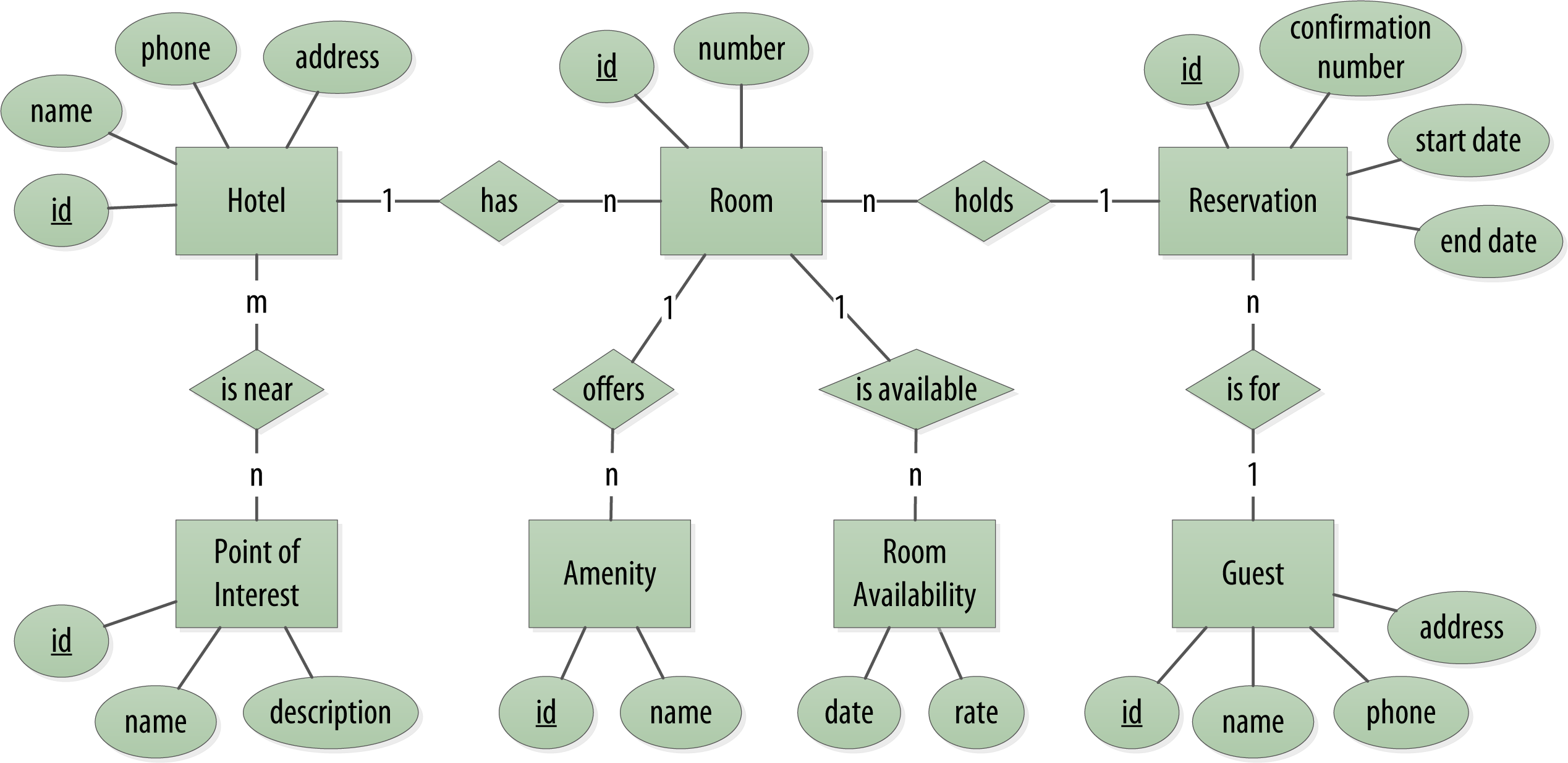Conceptual data modeling
First, let’s create a simple domain model that is easy to understand in the relational world, and then see how you might map it from a relational to a distributed hashtable model in Cassandra.
Let’s use an example that is complex enough to show the various data structures and design patterns, but not something that will bog you down with details. Also, a domain that’s familiar to everyone will allow you to concentrate on how to work with Cassandra, not on what the application domain is all about.
For example, let’s use a domain that is easily understood and that everyone can relate to: making hotel reservations.
The conceptual domain includes hotels, guests that stay in the hotels, a collection of rooms for each hotel, the rates and availability of those rooms, and a record of reservations booked for guests. Hotels typically also maintain a collection of “points of interest,” which are parks, museums, shopping galleries, monuments, or other places near the hotel that guests might want to visit during their stay. Both hotels and points of interest need to maintain geolocation data so that they can be found on maps for mashups, and to calculate distances.
The conceptual domain is depicted below using the entity–relationship model popularized by Peter Chen. This simple diagram represents the entities in the domain with rectangles, and attributes of those entities with ovals. Attributes that represent unique identifiers for items are underlined. Relationships between entities are represented as diamonds, and the connectors between the relationship and each entity show the multiplicity of the connection.

Obviously, in the real world, there would be many more considerations and much more complexity. For example, hotel rates are notoriously dynamic, and calculating them involves a wide array of factors. Here you’re defining something complex enough to be interesting and touch on the important points, but simple enough to maintain the focus on learning Cassandra.
Material adapted from Cassandra, The Definitive Guide. Published by O’Reilly Media, Inc. Copyright © 2020 Jeff Carpenter, Eben Hewitt. All rights reserved. Used with permission.














